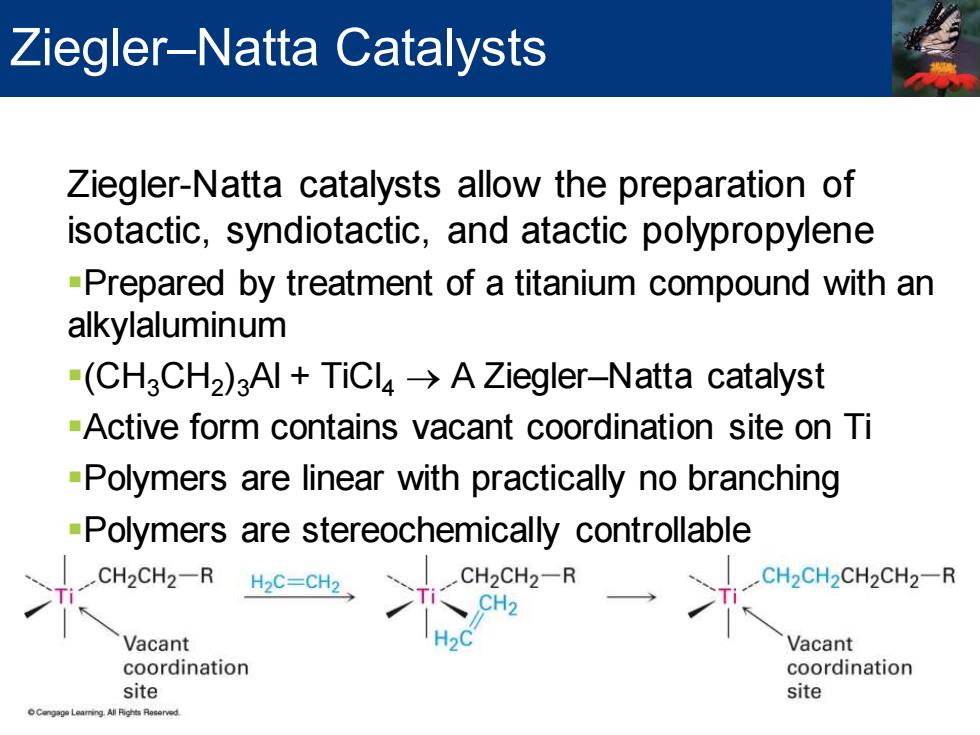
Stereochemistry of Polymerization: Ziegler-Natta Catalysts H CH3 H CH3 H CH3 H CH3 H CH3 H CH3 H CH3 H CH3 Isotactic(same side) CH3 CH3 CH3 CH3 H H3C H H3C H H H3C H Syndiotactic(alternating sides) CH CH3 H CH3H H3C HH3C H H CH3H H3C H Atactic(random) ec
Stereochemistry of Polymerization: Ziegler–Natta Catalysts

Ziegler-Natta Catalysts Ziegler-Natta catalysts allow the preparation of isotactic,syndiotactic,and atactic polypropylene -Prepared by treatment of a titanium compound with an alkylaluminum (CH3CH2)3Al+TiCl>A Ziegler-Natta catalyst -Active form contains vacant coordination site on Ti -Polymers are linear with practically no branching -Polymers are stereochemically controllable CH2CH2-R H2C-CH2 一> CH2CH2-R CH2CH2CH2CH2-R Vacant H>C Vacant coordination coordination site site Learring All Pights Resorved
Ziegler-Natta catalysts allow the preparation of isotactic, syndiotactic, and atactic polypropylene ▪Prepared by treatment of a titanium compound with an alkylaluminum ▪(CH3CH2 )3Al + TiCl4 → A Ziegler–Natta catalyst ▪Active form contains vacant coordination site on Ti ▪Polymers are linear with practically no branching ▪Polymers are stereochemically controllable Ziegler–Natta Catalysts

27-3 Copolymers Copolymers are obtained when two or more different monomers polymerize together They can be random or alternating CI H2C=CH+ H2C=CCI2 CH2CH- CH2C Vinyl Vinylidene m chloride chloride Saran
Copolymers are obtained when two or more different monomers polymerize together ▪ They can be random or alternating 27-3 Copolymers